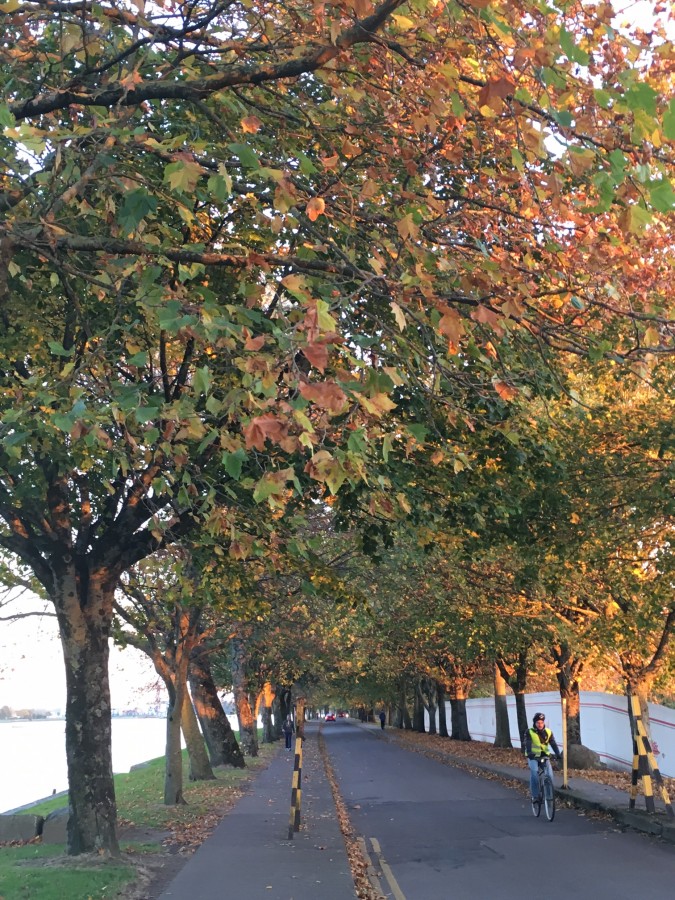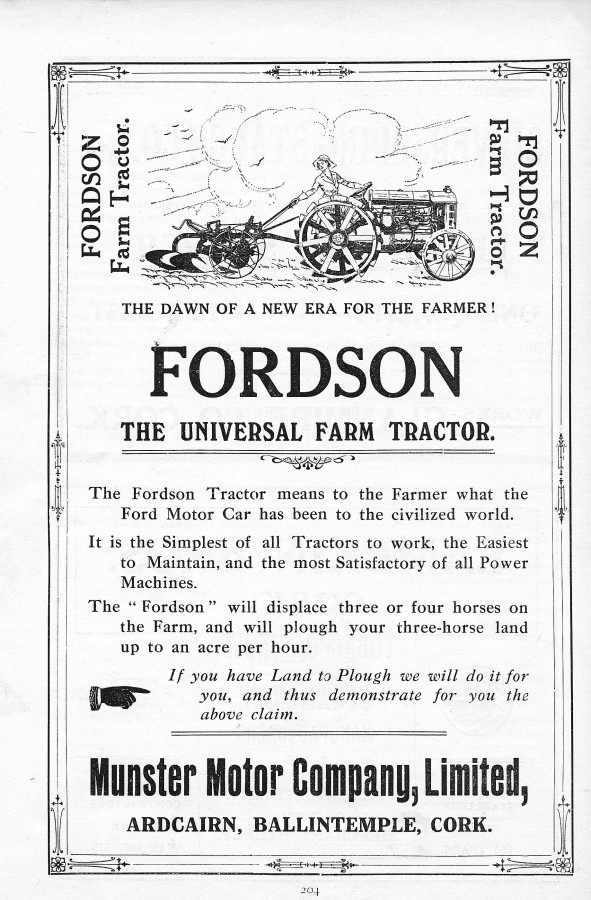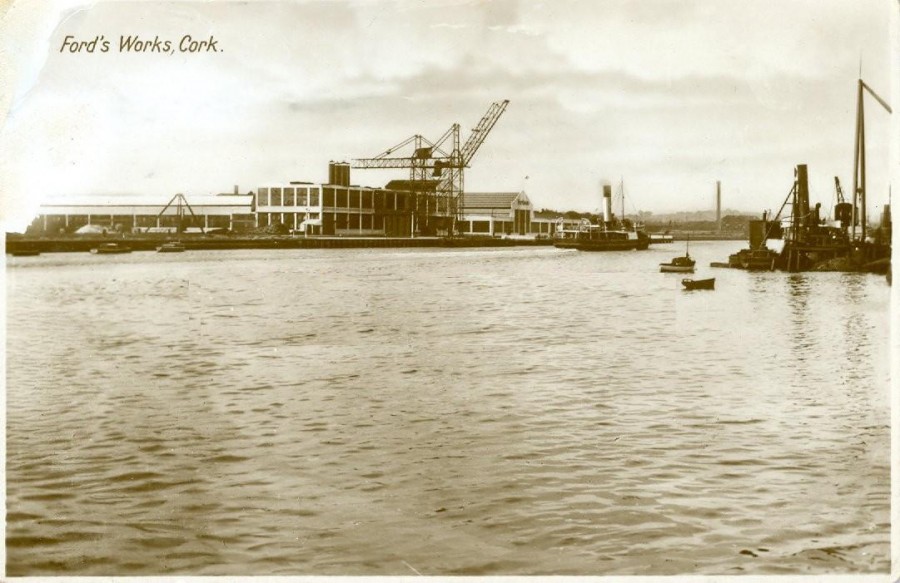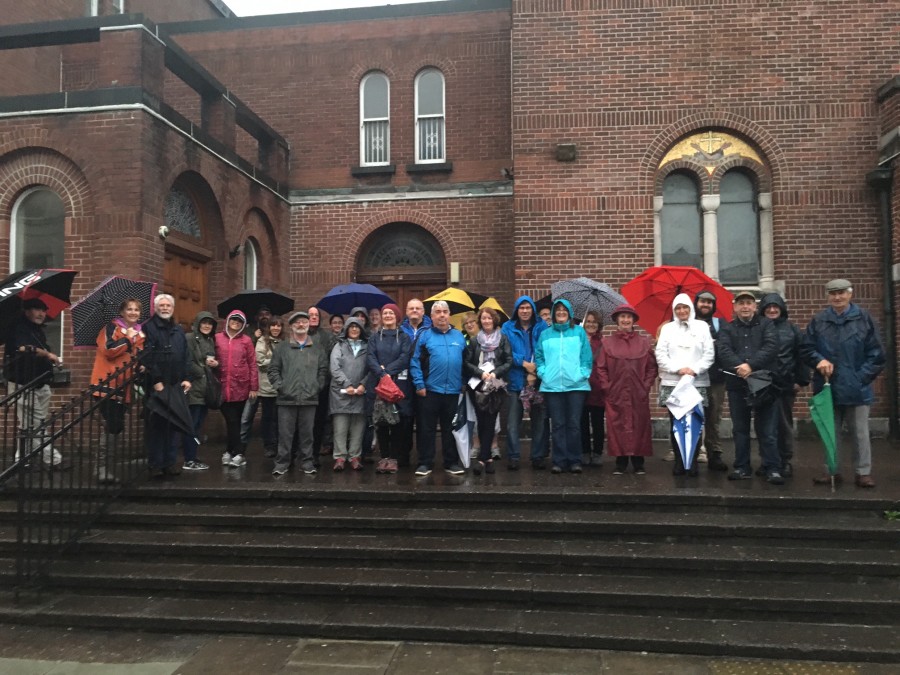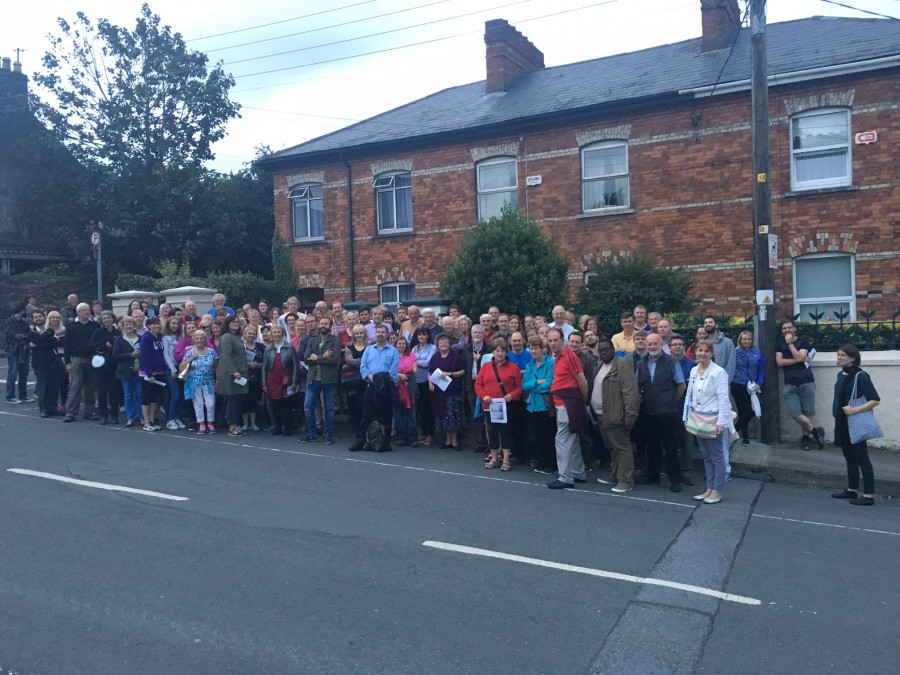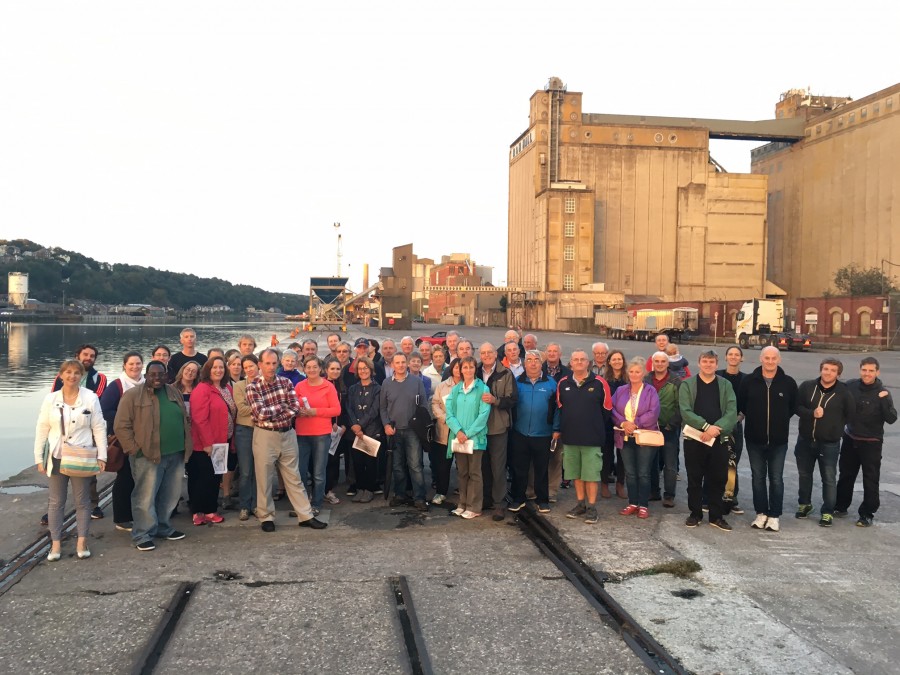Category Archives: Ward Events
First Call: Cllr McCarthy’s Community Talent Competition 2017
Press Release:
Cork’s young people are invited to participate in the ninth year of Cllr Kieran’s McCarthy’s Community Talent Competition’. The auditions will take place on Sunday 23 April 2017 between 10am-5pm in the Lifetime Lab, Lee Road. There are no entry fees and all talents are valid for consideration. The final will be held on Sunday 7 May. There are two categories, one for primary school children and one for secondary school students. Winners will be awarded a perpetual trophy and prize money of €150 (two by €150). The project is being organised and funded by Cllr Kieran McCarthy in association with Red Sandstone Varied Productions (RSVP).
Cllr. McCarthy noted: “The talent competition is a community initiative. It encourages all young people to develop their talents and creative skills, to push forward with their lives and to embrace their community positively”. Further details can be got from the talent show producer (RSVP), Yvonne Coughlan, email: rsvpireland@gmail.com.
Kieran’s Speech, Blackrock Community Association AGM, February 2017
The Entanglement of Place
Cllr Kieran McCarthy
Madame chairperson, colleagues, committee members, ladies and gentlemen,
Thanks for the invite this evening to this my eighth AGM; time flies.
It is great and frustrating to meet adjacent a building site – a half finished but ongoing project with lots of complexities to complete, entanglements to disentangle and lots of odds and ends to tie up, which we can discuss at length later this evening.
But it is clear that the DNA of the village is transforming once again and its public face is being redrawn and renewed,
– where the element of what makes up a place gets unpacked and repacked,
– where mixed emotions and questions move and are fluid,
– where childhood and family spaces are turned over,
– where the everyday movements of people get muddled and turned upside down,
– where routine is broken and remade,
– where an assembly of old stones get taken down and become re assembled as new structures,
– where old transport routes and rails re-appear,
– where stones become cobbled spaces,
– where no through signs become obstacle courses, where the past haunts the future,
– where phone calls and email boxes to public reps like myself become full with queries and suggestions,
and what should a living heritage quarter of a city look like,
It’s all one big entanglement for this old fishing village, which is clearly passing through a significant phase of development, which will be spoken about and remembered for years to come. It shows clearly the power of place in this quadrant of the world and how the powers of place are multiple in nature. In essence, place matters. In a world where globalisation reigns, more than ever place matters.
This is also apparent in the proud DNA of Rockies and those who wish to be one!
With Blackrock, we are dealing with immense scenic perspectives.
We are dealing with gorgeous, original and well invested architectural, and rich stories.
We are dealing with historical DNA is rooted in ancient Cork from the sixteenth century.
We are dealing with an area that really emerged in the late eighteenth and early nineteenth centuries where the city was branding itself as one of the Venices of the North and the Athens of Ireland in terms of cultural output.
People wished to live here and be inspired here; they built big houses and estates here; but their culture though was filtered down by the strong hardworking fishing village present here, which was part of a necklace of fishing villages in Cork Harbour. One by one great institutions from the Marina, the Ursuline convent, the churches, the railway line, the pier, the tram lines were all added to provide services but also built in a way to enhance the sense of place.
And of course, the most important historical element from one hundred years, which is getting a lot of press recently is the centenary of the construction of the Ford Plant.
In November 1916, Fords made an offer to purchase the freehold of the Cork Park Grounds and considerable land adjoining the river near the Marina. Fords, Cork Corporation and the Harbour Commissioners entered into formal negotiations. In January 1917, it was decided to obtain parliamentary powers to permit the sale of the necessary land, which would enable the Company to erect buildings of a size demanded by the extent of the proposed output.
Under the agreements drawn up between parties involved, the Company acquired approximately 130 acres of land, having a river frontage of approximately 1,700 feet, the company agreeing to erect the buildings to cost at least £200,000 to give employment to at least 2,000 adult males, and to pay a minimum wage of one shilling per hour to them when employed in the factory after completion.
And of course, the new factory brought its own building site in November 1917 when the foundations were laid.
The plant being laid down by the company was specially designed for the manufacture of an Agricultural Motor Tractor, well known as the “fordson”, a 22 horse power, four cylinder tractor, working with kerosene or paraffin, adaptable either for ploughing or as a portable engine arranged for driving machinery by belt drive.
The demand for such tractors was universal and great. Large areas could be brought under food production with the minimum of expense and labour. The Cork factory was to provide ‘fordsons’ to local, regional and national farmers and further afield on the European Continent.
And culturally transformed this corner of the city – industry came to Blackrock, and a steady wage – as well as opportunities to join Fordson Soccer team, build new housing estates paid for by workers as well the creation of new public houses.
Of course the list goes in exploring the rich heritage of this area; we are lucky to have such heritage here, which offers so much thought and complex levels of thinking about place and home.
Support:
I would also like to thank the people of Blackrock for their interest and support in my own community projects over the last eight years now.
– The Discover Cork: Schools’ Heritage or Local history project, got some nice work this school season from 50 schools of which Beaumont BNS and GNS have pursued some great work on the history of this locality and some really great what I would deem lost family histories are re-emerging.
– The local history column in the Cork Independent, in the books I have been lucky to publish – two last year in terms of Cork City Centre Tour and Cork 1916, Examining everyday life.
– McCarthy’s Community Talent Competition is in its ninth year.
– McCarthy’s Make a Model Boat Project on the Atlantic Pond, also in its ninth year.
– and the walking tours through this ward; there are now ten of these – developed over the last number of years – and are ongoing and attract many interested people – people are interested in community, their roots, their identity and sense of place and the Blackrock Tour attracts many new residents who have many questions and are delighted to find a home in this quarter of the city or corner of the world
– With Cork City Musical Society, I directed Crazy for You in the Firkin Crane in Shandon.
– The appointment by the Minister for the Environment as an Irish delegate to the EU’s Committee of the Regions, is a busy one every three weeks of so. The 350 member committee gives advice to the European Parliament on local authority issues. I have shared the importance of small but significant projects such as yours from outings to get togethers. I have had the opportunity to see many new place and encounter situations from the Atlantic to the EU’s eastern borders in eastern Bulgaria– and ultimately everyone I have met is looking to live in places with opportunities and to be able to live or raise a family in safety. The importance of education, lifelong learning and building community capacity are consistently themes I encounter, even in the most impoverished places I have been sent to. At the end of last year, I was sent to a camp on innovation to Gabrovo in Central Bulgaria, where they earn on average e5,000 a year and where a average cost of a house is e35,000. And those I spoke with appreciated the Irish sense of community and believed in social innovation. I still firmly believe that communities and community groups such as yourself should have a stronger voice in driving and dictating social policy.
– Thank you for your continued courtesy towards myself. You always learn something new about yourself in Blackrock, indeed here is a place where you get stopped on the road for a chat, are challenged, encouraged, supported, helped and always pushed!
– Best of luck in the year ahead as you refocus the lens of this community space in the finished village renewal scheme. In these AGMs, there should always be the sense of thanks and renewal of spirit. Thank You.
Marina Park Progress, January 2017
Cllr Kieran McCarthy has welcomed the recent positive response to his question of the Director of Environment and Amenity of Cork City Council i.e. that there is now a timeline to have Marina Park, the public park to circulate the new Pairc Uí Chaoimh, in place and open by the end of 2018. The demolition of the existing Showgrounds buildings is currently out to tender with responses due back on 25 January 2017. A contract will then be awarded following the completion of the tender assessment process.
Consultation with the Cork County Board design team is ongoing to ensure that the final stadium design will be seamlessly into the proposed Marina Park. The detailed design of the Marina Park will be progressed over the coming months with the tender for the construction of same issuing once the detailed design works are completed.
Commenting Cllr McCarthy noted; “these are exciting times for the Blackrock and Marina area as public amenities are cleaned up, enhanced and developed. By the end of 2018, this part of the city will have impressive public realm spaces in the shape of Blackrock Pier, Marina Park and the new stadium. It’s important now that the Council projects are kept on track and funding put aside to progress them to successful conclusions”.
Happy Christmas

Happy Christmas, time to slow down and enjoy!
Blackrock Historical Walking Tour, Sunday 27 November 2016
As a contribution to marking the restoration of the tram lines as a heritage feature in Blackrock Cllr Kieran McCarthy will conduct a historical walking tour of Blackrock Village on Sunday 27 November, 2.30pm (starts at Blackrock Castle, two hours, free). Cllr McCarthy notes: “A stroll in Blackrock is popular by many people, local and Cork people. The area is particularly characterised by beautiful architecture, historic landscapes and imposing late Georgian and early twentieth century country cottages to the impressive St Michael’s Church; every structure points to a key era in Cork’s development. Blackrock is also lucky that many of its former residents have left archives, census records, diaries, old maps and insights into how the area developed, giving an insight into ways of life, ideas and ambitions in the past, some of which can help us in the present day in understanding Blackrock’s identity going forward”.
One hundred years ago, the Corporation of Cork had to foresight to connect the city’s suburbs with the city centre through a tram network. The story of how the trams connected the old fishing village of Blackrock with the city is a worthy one to tell- connected in terms of the wealth of history in this corner of the city and connected in terms of experimenting with the provision of new transport networks. The trams were developed in connection with the Corporation’s roll-out of electricity in the city in 1898. The tram lines themselves were electricity cables. The Corporation of Cork established a large electricity generating plant on Albert Road (now the site of the National Sculpture Factory). The Electric Tramways and Lighting Company Ltd was registered in London and had a close working relationship with eminent electrical contractors, the British Thomson-Houston Company. Cllr McCarthy highlights: “By 1900, 35 electric tram cars operated throughout the city and suburbs. They were manufactured in Loughborough, UK and all were double deck in nature, open upstairs with a single-truck design”. Cllr McCarthy’s walk will finish at Natural Foods Bakery at 4.30pm in time for tea, coffee and poetry to mark the restoration of the old tram lines with Douglas Writers club.
Autumnal Landscapes, The Marina, Early November 2016
Kieran’s Question to the CE, Cork City Council Meeting, 24 October 2016
To ask the CE on the up todate progress on Blackrock village regeneration project as well as an update on funding for phase 2? (Cllr Kieran McCarthy)
Kieran’s Our City, Our Town, 22 September 2016
Kieran’s Our City, Our Town Article,
Cork Independent, 22 September 2016
Discover Cork: Schools’ Heritage Project 2016-17
This year coincides with the fourteenth year of the Discover Cork: Schools’ Heritage Project. Again launched for the new school term, the Project is open to schools in Cork; at primary level to the pupils of fourth, fifth and sixth class and at post-primary from first to sixth years. There are two sub categories within the post primary section, Junior Certificate and Leaving Certificate. A student may enter as an individual or as part of a group or a part of a class entry.
Co-ordinated by myself, one of the key aims of the project is to encourage students to explore, investigate and debate their local heritage (built, archaeological, cultural and natural) in a constructive, active and fun way. Projects on any aspect of Cork’s rich heritage can be submitted to an adjudication panel. Prizes are awarded for best projects and certificates are given to each participant. A cross-section of projects submitted from the last school season can be gleamed from this link on my website, www.corkheritage.ie where there are other resources, former titles and winners and entry information as well.
Students produce a project on their local area using primary and secondary sources. Projects must also meet five elements. Projects must be colourful, creative, have personal opinion, imagination and gain publicity before submission. These elements form the basis of a student friendly narrative analysis approach where the student explores their project topic in an interactive and task oriented way. In particular students are encouraged to attain material through visiting local libraries, engaging with fieldwork, interviews with local people, making models, photographing, cartoon creating, making DVDs of their area. Re-enacting can also be a feature of several projects. For over thirteen years, the project has evolved in how students actually pursue local history. The project attempts to provide the student with a hands-on and interactive activity that is all about learning not only about heritage in your local area (in all its forms) but also about the process of learning by participating students.
This school term there is a focus on the Ford Motor Company with projects on the old factory being encouraged. One hundred years ago, engineering was important in Cork Harbour quay wall works, Cork’s electric lighting and power supply, and Railway facilities. There was a considerable amount of citizens who worked in foundries, mill-wrighting, jobbing and in general repair work. The possibilities for engineering on a scale appropriate to the extensive waterfront and river transport were to be increased by the arrival to Cork in 1917 of the firm, Messrs. Henry Ford & Son, Inc. of Dearborn, Michigan.
Henry Ford’s grandfather John in his early years was a native of Wolfe Tone Street in Cork City. In later life, he moved with his family to become tenants on an estate at Ballinascarty, near Bandon. John had three brothers, Samuel, Henry and George who emigrated to America in search of fortune in the 1830s. The Ford Motor Company was incorporated in June 1903 with Henry Ford (III) as vice-president and chief engineer. Henry realized his dream of producing an automobile that was reasonably priced, reliable, and efficient with the introduction of the Model T in 1908. From 1908 until 1927, the company would sell more than 15 million Model T cars and trucks in the US and Europe. The company began construction of the world’s largest industrial complex along the banks of the Rouge River in Dearborn, Michigan, during the late 1910s and early 1920s.
In November 1916, Fords made an offer to purchase the freehold of the Cork Park race grounds and considerable land adjoining the river near the Marina. Fords, Cork Corporation and the Harbour Commissioners entered into formal negotiations. The Ford Company acquired approximately 130 acres of land, having a river frontage of approximately 1,700 feet, the company agreeing to erect the buildings to cost at least £200,000 to give employment to at least 2,000 adult males, and to pay a minimum wage of one shilling per hour to them when employed in the factory after completion. The plant being laid down by the company was specially designed for the manufacture of an Agricultural Motor Tractor, well known as the “fordson”, a 22 horse power, four cylinder tractor, working with kerosene or paraffin, adaptable either for ploughing or as a portable engine arranged for driving machinery by belt drive. There is a great project for a student to pursue on some of the stories of Fords.
The Discover Cork: Schools’ Heritage Project is about thinking about, understanding, appreciating and making relevant in today’s society the role of our heritage such as Fords. The project is open to many directions of delivery. Students are encouraged to engage with their topic -in order to make sense of it, understand and work with it. Students continue to experiment with the overall design and plan of their work. This project in the City is kindly funded by Cork City Council (viz the help of Niamh Twomey), the Heritage Council and Cork Civic Trust (viz the help of John X. Miller). Prizes are also provided by the Lifetime Lab, Lee Road and Sean Kelly of Lucky Meadows Equestrian Centre, Watergrasshill (www.seankellyhorse.com). There is also a County Cork edition.
Captions:
862a. Advertisement for Fordson, 1919 (source: Cork City Library).
862b. Ford Works, c.1930 (source: Cork City Museum)
Kieran’s Historical Walking Tours, National Heritage Week, 2016
Many thanks to the 500 participants (and several repeat participants) who came out for my 7 historical walks for National Heritage Week 2016
Cork City Hall Tour

Eighteeenth Century Cork:
St Patrick’s Hill – McCurtain Street, The Victorian Quarter
Docklands:
Workhouse at old Cork Union Workhouse at St Finbarr’s Hospital:
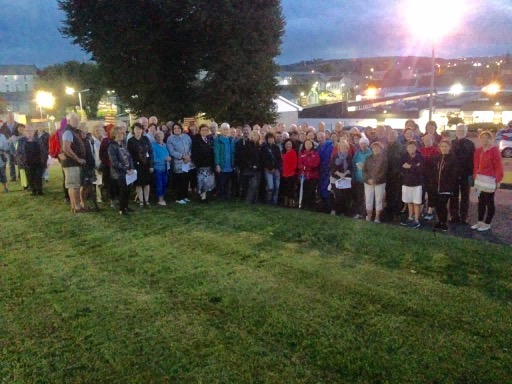
Friar’s Walk Quarter:
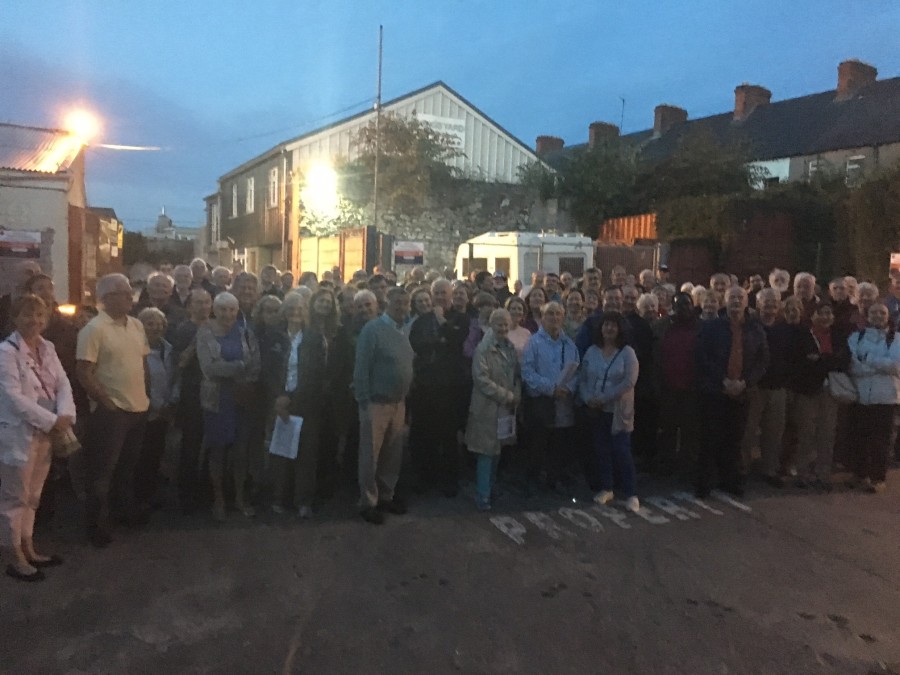
Fitzgerald’s Park:
